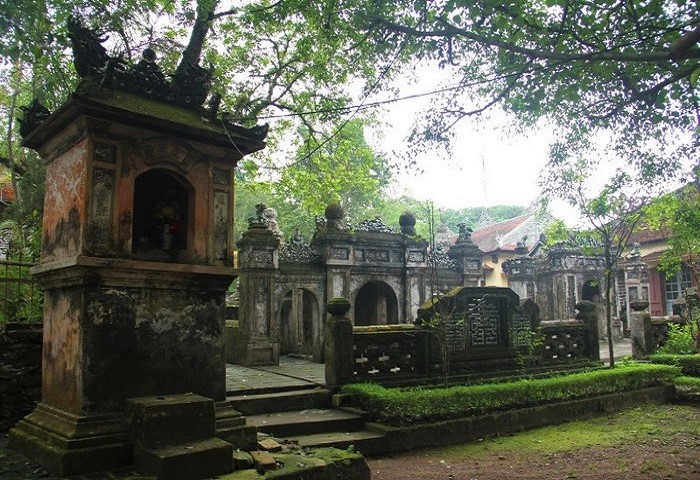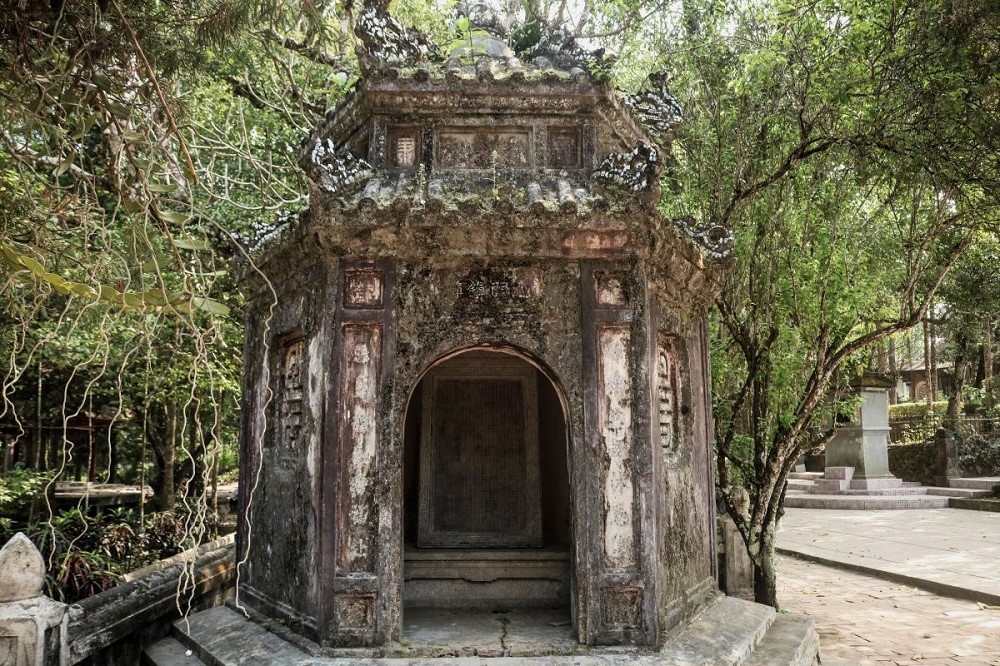The pagoda symbolizes filial piety
Tu Hieu pagoda was originally just a Thao Am (shrine) with the name of An Dung Am set up by the zen master Nhat Dinh. He was the monk of the Giac Hoang Pagoda in the palace, after retirement, he went to the forest to nurture his elderly mother and practice purification here. Legend has it that because his elderly mother was seriously ill, he had to nourish with meat, so every day the monk had to cross the road with a stick to find fresh fish to cook porridge for his mother. People see that, so gossip is a monk but he eats salty, he still ignores all to take care of his mother. Rumors reached King Tu Duc's ears, the king then let people investigate to learn that he cooked porridge for his sick mother and still fasted every day, a practicing mind. The king heard that and was touched by the filial piety of the Zen master on the high mountain. Later, in 1848, a year after the death of the Zen master Nhat Dinh, perhaps, touched by the virtue of the old monk, the construction of the expansion of Thao Am into Tu Hieu pagoda was always helped by the court, the eunuchs and the Buddhists. When the pagoda was completed, Emperor Tu Duc remembered the old story and gave the pagoda the name "Tu Hieu Tu".

The burial place of zen master Nhat Dinh, who is associated with the story of piety
In the inscription, the construction process of the pagoda is explained:
• Tu: is the great kindness of the Buddha, if not the patience then take what continues to help all kinds of beings.
• Hieu: is the Buddha's virtue, if you do not have filial piety, what do you take to reach the world that covers the earth and heaven?
Along with the contribution of Buddhists, Tu Duc emperor provided many funds, the pagoda was also donated money by officials in the Nguyen Dynasty, especially the eunuchs to take care of the worship later, in 1848 Hoa Thuong Cuong Ky began to build a larger scale pagoda and then Tu Hieu became a large pagoda.
In 1894 Venerable Cuong Ky continued to renovate and build a panoramic pagoda with the help of Thanh Thai emperor, eunuchs and Buddhists.
In 1931 Venerable Hue Minh continued to renovate and build a semicircular lake.
In 1962 Venerable Chon Thiet continued to renovate and reconstruct the entire pagoda.
In 1971, the pagoda was restored by the Venerable Chi Niem for the restoration of the three-arched gate, the semicircular lake and the damaged houses.

Stone stele at Tu Hieu pagoda - Photo: Tan Nhat (visithue.vn)